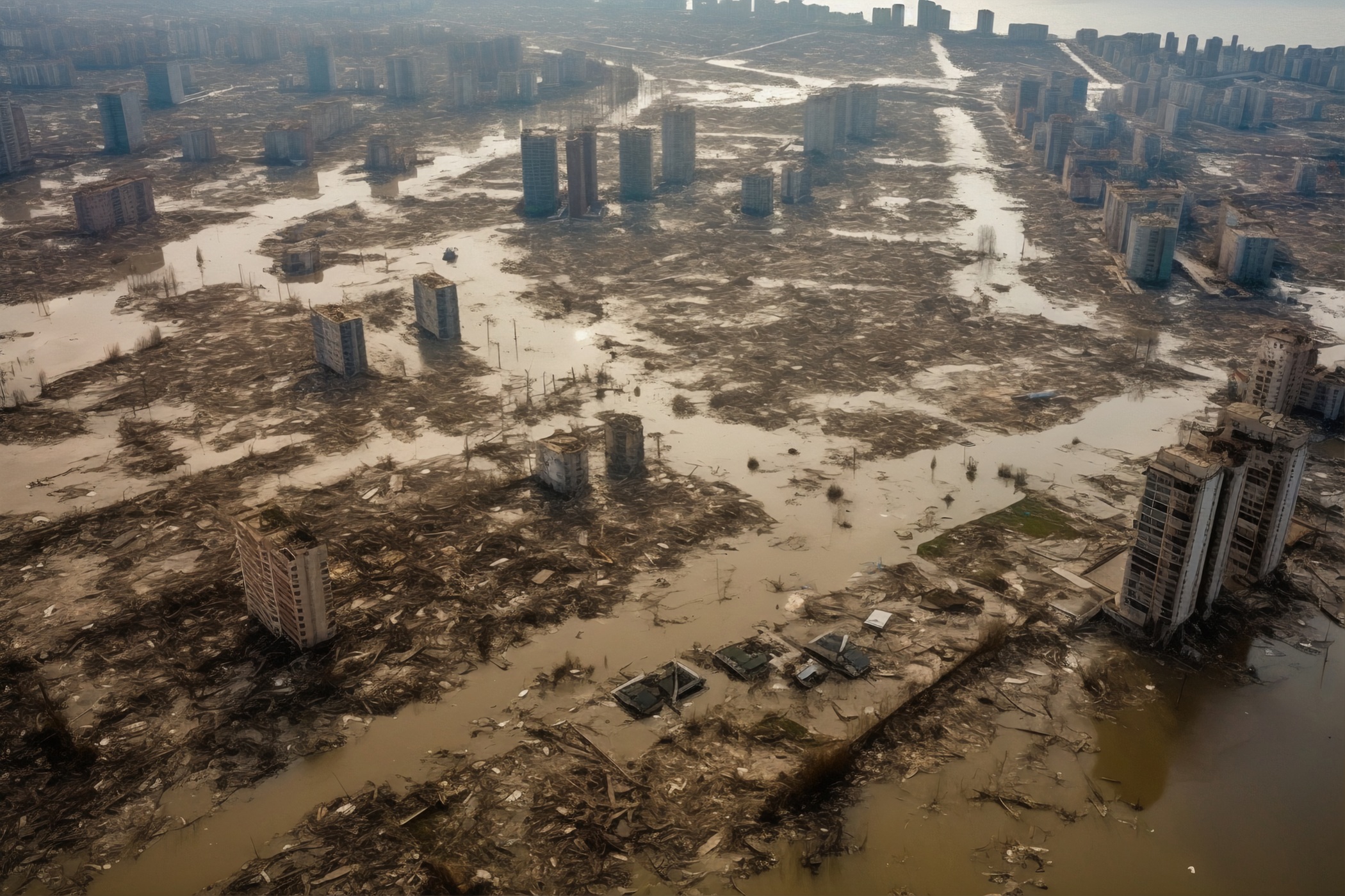Brisbane Flooding Explained: What Causes It and How to Stay Safe
If you’ve lived through a Brisbane flooding event, you know how fast things can change. One minute it’s raining, the next your street is a river. Here’s what causes it—and how you can be ready next time.
What Causes Flooding in Brisbane?
Many natural events affect Brisbane flooding:
1. Riverine Flooding During La Niña Seasons
Extended heavy rainfall associated with La Niña events can lead to the Brisbane River and its tributaries overflowing, resulting in significant flooding.
2. Coastal Flooding from Storm Surges and High Tides
Tropical cyclones during the November to April season can cause storm surges and elevated sea levels, leading to coastal flooding in low-lying areas.
3. Flash Flooding from Intense Rainfall
Short, intense bursts of rainfall can overwhelm drainage systems, causing rapid and hazardous flash flooding Brisbane disasters.
4. Amplification of Flood Risks by Tropical Cyclones
Tropical cyclones can exacerbate flood risks by bringing strong winds and heavy rainfall, increasing the likelihood of both inland and coastal flooding.
Where to Find Brisbane Flood Warning?
One of the best ways to remain safe during Brisbane flooding is to remain informed. Many reliable sites offer current flood warnings, projections, and emergency alerts to enable swift homeowner preparation and reaction.
Brisbane City Council
The Flood Awareness Map of Brisbane City Council offers localised flood information. This Brisbane flood map shows flood-prone areas depending on past data and possible flood situations. The council also informs people during crises through its website and social media.
Bureau of Meteorology
Official flood warnings in Australia mostly come from the Bureau of Meteorology. Their site provides flood alarms for the Brisbane area, real-time river height data, and thorough predictions. It also offers weather forecasts and other useful information. The BOM Weather app lets you receive notifications straight on your phone.
Local News Sources
ABC Radio Brisbane and local news channels offer continuous updates and emergency broadcasts during major flooding. Should power or internet access be interrupted, keep a dependable news app or battery-powered radio handy to remain connected.
History of Major Flood Events in Brisbane
Brisbane's devastating floods have shaped its planning and disaster management. Knowing these past events shows why preparedness and infrastructure development are crucial to resilience.
1893 Flood (The Great Floods)
Brisbane experienced three significant floods in February 1893 all in the same month. Peaking at more than 8.3 metres, the Brisbane River caused great devastation and fatalities.
1974 Brisbane Flood
The 1974 flood saw the river reach 5.45 metres, triggered by Cyclone Wanda's torrential rains. About 8,000 houses were harmed, and almost 14,000 people had to leave.
2011 Brisbane Flood
Water from upstream catchments following weeks of heavy rain prompted the river to crest at 4.46 metres in January 2011. Thousands of homes were flooded. The catastrophe took over 30 lives all throughout Queensland.
2022 Brisbane Flood
In February 2022, heavy rain over several days caused flash flooding and increased river levels. Across southeast Queensland, more than 20,000 residences were impacted, and significant infrastructure and transportation networks were disturbed.


Government Initiatives to Improve Brisbane’s Flood Resilience
Brisbane is prone to flooding. Its susceptibility prompted the government to launch several programmes to improve its preparedness and resilience.
Brisbane’s FloodSmart Future Strategy 2012-2031
This 20-year strategy describes Brisbane City Council's flood risk management strategy. To mitigate floods, it promotes flood-resilient buildings, land use planning, and community awareness.
Flood Resilient Suburbs Programs
These Brisbane City Council programmes help residents, businesses, and community facilities prepare for, survive, and recover from floods. They provide flood-resilience assessments and property renovation advice.
Brisbane River Strategic Floodplain Management Plan
This plan coordinates Brisbane River floodplain flood risk management by the Queensland Government and local governments. The 52 proposals address structural mitigation, land use planning, and disaster management.
How to Prepare for Floods in Brisbane?
Brisbane's flood risk makes planning not optional but absolutely necessary. Although early alerts are beneficial, having the correct tools and strategies in place may greatly affect safety and comfort.
1. Install Flood Barriers or Sandbags
Physical Barriers: Utilize door seals, flood barriers, or sandbags to protect entry points like doors and garages. These barriers help prevent or redirect water from entering your home.
Procurement: The Brisbane City Council often provides sandbag stations before anticipated flood events. It’s advisable to collect sandbags during these alerts to ensure you have adequate protection
2. Improve Drainage Around Your Property
Regular Maintenance: Keep storm drains, downpipes, and gutters clear of debris to facilitate proper water flow away from your home.
Backflow Valves: Installing backflow valves can prevent sewage from entering your home during floods.
Landscaping Adjustments: Use gravel or permeable pavers and design your landscape to slope away from the foundation. These measures help control surface runoff more effectively.
3. Secure a Reliable Power Source at Home
Home Battery Backup Solutions: Flooding frequently causes blackouts that can disrupt daily life. Dependable home battery backup solutions keep critical appliances running during floods to preserve security and comfort. The EcoFlow DELTA Pro Portable Power Station is an excellent choice during Brisbane floods. Its base capacity of 3,600Wh and expansion capacity of 21,600Wh and 3,600W AC output making it a strong emergency backup during flood events.


Traditional Generators: A conventional home backup generator provides more support for longer-term outages or bigger households. Installed outside the house, these generators run on LPG, fuel, or petrol. Although not as portable or quiet as solar alternatives, they offer steady power for vital systems. Ensure your generator is raised and correctly ventilated during power outage Brisbane occurrences.
4. Pack an Emergency Kit
Prepare an emergency kit with items such as non-perishable food, water, medications, flashlights, batteries, and important documents. Store the kit in an easily accessible location.
5. Develop an Evacuation Plan
Family Communication: Establish a clear evacuation plan, including meeting points and communication strategies. Ensure all family members are familiar with the plan.
Pet Safety: Include provisions for pets in your evacuation plan, such as carriers, food, and identification tags.
6. Stay Informed
Weather Alerts: Regularly monitor local news and weather forecasts for flood warnings and updates.
Community Resources: Familiarize yourself with community resources and support services available during flood events.
Conclusion
Brisbane flooding is an unpredictable and formidable force, but with proactive preparation, you can significantly mitigate its impact. By assembling an emergency kit, adopting various home battery backup solutions,developing a comprehensive evacuation plan, and staying informed through reliable sources, you can protect your home and loved ones. Remember, in flood situations, timely action and informed decisions are crucial. Stay alert, stay prepared, and always prioritize safety.
FAQs
When did Brisbane last flood?
In early March 2025, Brisbane experienced significant rainfall due to ex-Tropical Cyclone Alfred. On March 9, the city recorded 275.2 mm of rain in 24 hours, marking its wettest day since 1974. This intense rainfall led to localized flooding in several suburbs, including Windsor and Chelmer. However, the Brisbane River did not reach major flood levels during this event.
What was the worst flood in Brisbane history?
The worst flood in Brisbane's recorded history, the "Great Floods," happened in 1893. In February, three distinct flood peaks hit the Brisbane River, rising above 8.3 metres. This flood caused major destruction and a notable death toll. Though previous floods like 1974 and 2011 were also terrible, 1893 remains the most catastrophic.
What resources are available to help residents during floods?
Real-time notifications and river height changes come from the Bureau of Meteorology. Brisbane City Council provides localised resources including community warnings and the Flood Awareness Map. Services like the Early Warning Network and Queensland Government catastrophe dashboards also enable citizens to get ready and react more efficiently.Of course, citizens themselves should also make some preparations in advance, such as an emergency kit and a home battery storage power station, so as to better deal with the impact of floods.